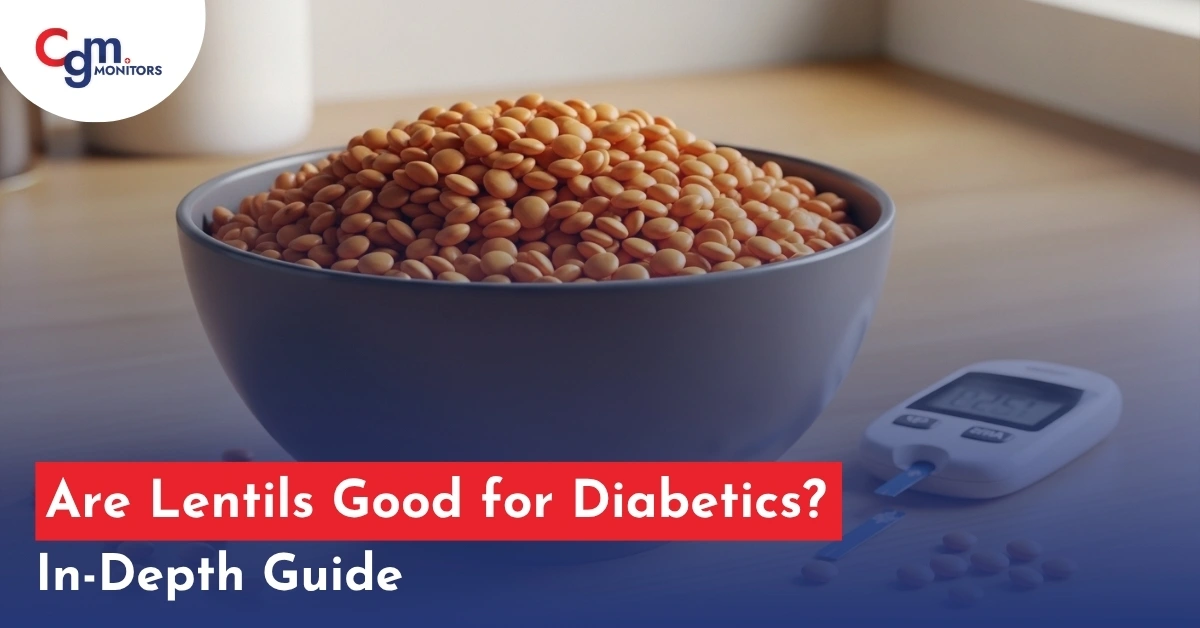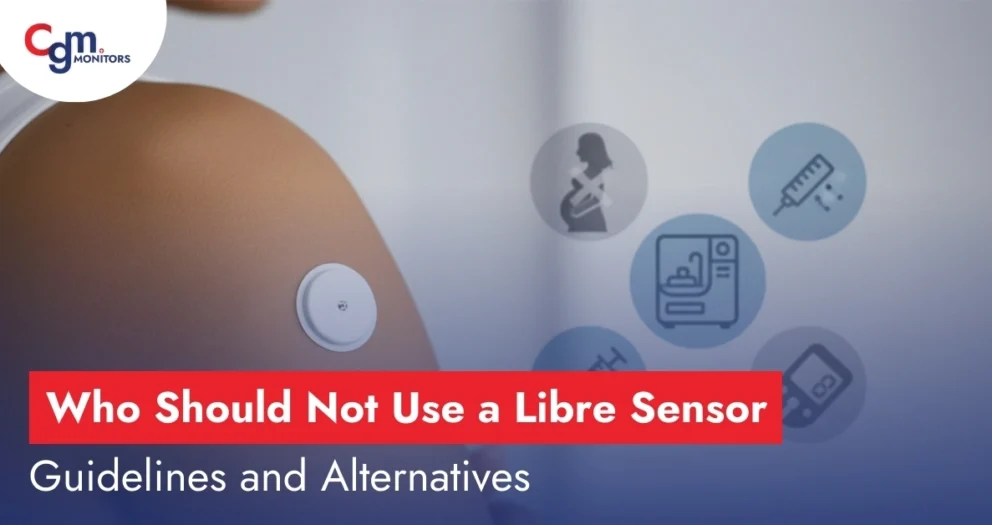Table of content
- Introduction
- Link Between Lentils and Diabetes: Let’s Understand it
- Nutritional Benefits of Lentils for Diabetes Management
- Best Types of Lentils for Diabetics
- Diabetes Management and Health Benefits of Lentils
- Recommended Daily Intake of Lentils for Diabetics
- Is Lentil Soup Good For Diabetics?
- What Time Do Lentils Affect Your Health the Best?
- Best Combination of Lentils: Rice, Chapati, or Porridge?
- When Lentils May Not Be Suitable
- Conclusion
- Frequently Asked Questions
Introduction
For people living with diabetes, making the right food choices is one of the most powerful ways to manage blood sugar levels. Carbohydrates, in particular, can have a direct impact on glucose control. That’s why many diabetic patients always wonder: Are lentils good for diabetics?
The quick answer is yes. Lentils are an excellent choice for individuals with type 1, type 2, or prediabetes. They are rich in plant-based protein, packed with fiber, and have a low glycemic index (GI), which means they release glucose slowly into the bloodstream. In this guide, we’ll explore the nutritional benefits of lentils, their role in blood sugar control, the best types of lentils for diabetics, and how to include them in a diabetic-friendly diet.
Link Between Lentils and Diabetes: Let’s Understand it
Lentils are part of the legume family, which includes beans, peas, and chickpeas. They are a great source of plant-based protein for diabetes and fiber, both of which are essential for controlling blood sugar levels. These small but mighty pulses are high in complex carbohydrates and fiber, making them a low-GI food.
Glycemic Index of Lentils
The glycemic index (GI) measures how quickly foods raise blood sugar. Foods with a GI below 55 are considered low GI. The glycemic index of lentils is relatively low as much a GI of 21–29, compared to other carbohydrate-rich foods, which helps in managing A1C levels and supports overall insulin sensitivity improvement. This makes them a smart carb choice for diabetics.
Glycemic Load and Insulin Response
The glycemic load (GL) of lentils is also low, which means they don’t cause major spikes in insulin or glucose. For diabetics struggling with insulin resistance, lentils provide steady energy without sudden highs and lows.
Still on fingerpricks?
Continuous glucose monitors (CGMs) monitor your blood sugar 24/7, without you needing to prick your fingers; many have low/high glucose alerts, and the latest ones, like Freestyle Libre 2 Plus, are even compatible with the automatic insulin delivery (AID) systems.
Nutritional Benefits of Lentils for Diabetes Management
Lentils are a powerhouse food for people with diabetes due to their nutrient-rich profile. Let’s take a quick look to understand its nutritional value.
- Plant-Based Protein: Lentils are packed with protein, promoting fullness and helping to balance blood sugar levels when combined with carbohydrates.
- Complex Carbohydrates: The carbohydrates in lentils are complex, digesting gradually to maintain steady blood glucose levels, unlike fast-digesting refined carbs.
- High Fiber: A one-cup serving of cooked lentils offers around 15–16 grams of fiber, which slows digestion and helps prevent rapid blood sugar increases.
- Essential Nutrients: Lentils are loaded with vital nutrients like magnesium, folate, potassium, and iron, supporting heart health and energy stability.
- Weight Control Support: Their high protein and fiber content make lentils satisfying, aiding in weight management, which is crucial for diabetes care.
Best Types of Lentils for Diabetics
Not all lentils are the same. Here’s a breakdown of which varieties may be best for diabetic diets:
- Red Lentils: Quick to cook, low GI, and easy to digest. Great for soups.
- Green Lentils: Firm texture, very high in fiber, and excellent for salads.
- Brown Lentils: The most common type, versatile for stews and curries.
- Black Lentils (Beluga): Packed with antioxidants, offering added anti-inflammatory benefits.
While lentils are not low-carb foods, their health benefits far outweigh their carbohydrate content. Below is a summary of some popular lentil varieties and their nutritional content per 100 grams. These varieties of lentils, while not low in carbohydrates, are rich in other nutrients that are beneficial for people with diabetes:
Lentil Type |
Protein (g) |
Carbs (g) |
Fiber (g) |
Fats (g) |
Vitamins & Minerals |
| Brown Lentils | 9 | 20 | 8 | 0.4 | Rich in iron, folate, manganese, and potassium |
| Red Lentils | 9 | 20 | 7.5 | 0.6 | Good source of vitamin B6, potassium, and magnesium |
| Green Lentils | 9.5 | 18 | 7 | 0.5 | High in zinc, folate, and antioxidants |
| Black Lentils | 9 | 16 | 8.2 | 0.5 | Rich in iron, magnesium, and vitamin B1 |
| Yellow Lentils | 9 | 21 | 7.4 | 0.4 | High in folate, phosphorus, and vitamin B6 |
While white chickpeas boast a low GI value, they have not been added to the above table because of their high carbohydrate value, i.e., 61 grams in approx. 100 grams.
Diabetes Management and Health Benefits of Lentils
Incorporating lentils into your diet offers multiple advantages for managing blood sugar and enhancing overall well-being.
- Blood Sugar Regulation: Lentils have a low glycemic index and are rich in fiber, which helps stabilize blood glucose levels after meals, making them a great choice for diabetic meal plans.
- Heart Health Support: Diabetes raises the risk of cardiovascular issues. Lentils provide potassium, folate, and magnesium, which promote healthy heart function and help manage blood pressure.
- Prediabetes Management: For individuals with prediabetes, lentils can help maintain stable blood sugar levels, potentially delaying or preventing the progression to type 2 diabetes.
- Lower HbA1c Levels: Regularly eating lentils may reduce HbA1c levels (a measure of average blood sugar over three months), potentially decreasing the risk of diabetes-related complications.
- Enhanced Insulin Sensitivity: For those with type 2 diabetes, lentils can improve how effectively the body uses insulin, aiding in better glucose processing.
Note: William Michael, a CGM monitor user, shared how incorporating lentils into his daily diet affects his blood sugar levels. He reported a fasting blood sugar of 120 mg/dL and a post-meal level of 160 mg/dL when checked with Dexcom G7.
Recommended Daily Intake of Lentils for Diabetics
While lentils are not low in carbs, they can still be part of a healthy diet for people with diabetes. As a study shared by the University of Sydney suggests, consuming around 1/2 cup of cooked lentils per day may be beneficial for people with insulin resistance. This provides a balanced amount of fiber, protein, and healthy carbs for type 2 diabetes.
In contrast to many carbohydrate-rich foods, which can cause spikes in your blood sugar, consuming lentils in moderation and with green leafy vegetables can help prevent blood sugar spikes. It’s important to remember that portion control plays a significant role in managing diabetes, even with healthy foods like lentils.
Ready to make informed decisions?
Get a benefits check with CGM Monitors today and see if you qualify for a CGM system. Receive your supplies at your door with 0 delivery charges (within the USA).
Is Lentil Soup Good For Diabetics?
Lentil soup is considered a diabetes-friendly food that is easy to cook in your home. This type of meal is more especially for people with type 2 diabetes. Lentils have lots of features, like a low glycemic index between 21 to 35, rich in fiber, protein, potassium and magnesium. Lentil soup helps in controlling your sugar level, gives you satiety, and improves heart health. To maximise its benefits, consider these steps.
- Do not overcook the ingredients because it may cause nutritional losses.
- Use whole lentils, not blended with refined starches.
- Add Nuts like cashew, walnut and almonds.
- Add non-starchy vegetables (spinach, carrots, celery)
- Avoid potatoes, cream, or white flour thickeners
- Pair with healthy fats (olive oil)
Red lentils are a good option for making homemade soup, because they are easy to cook and have a lower GI than other.
What Time Do Lentils Affect Your Health the Best?
Lentils can be consumed at any time of day, but are most beneficial when eaten as part of a meal with other low glycemic index foods. Combining lentils with non-starchy vegetables or lean proteins helps to enhance their effects on blood sugar regulation. Eating lentils during lunch may help prevent blood sugar spikes later in the day.
Best Combination of Lentils: Rice, Chapati, or Porridge?
Lentils can be paired with various foods, but the best combinations depend on the type of meal you’re preparing and your carbohydrate management strategy. Rice and chapati (whole wheat) are commonly paired with lentils in many cuisines, but it is crucial to opt for brown rice or whole wheat chapati to maintain the low glycemic index foods principle. These options are higher in fiber, which complements the fiber in lentils and helps control blood sugar more effectively.
Another great option is lentil porridge, especially if you’re looking for a nutrient-dense meal. This combination of lentils and water or low-fat milk provides a hearty, fiber-rich food for diabetes that helps keep you full without causing significant blood sugar fluctuations. It also helps you avoid rapid glucose spikes typically associated with refined carbohydrates.
Lentils vs Other Foods
- Lentils vs Rice: Lentils have a much lower GI than white rice, making them a better choice for diabetics.
- Lentils vs Chickpeas: Both are healthy, but lentils generally have slightly lower GI values.
- Lentils vs Beans: Beans are also beneficial, but lentils cook faster and may cause less digestive discomfort.
What the NCBI Report Says
As shared in a study by NCBI, ‘The hypoglycemic effect of lentils has been documented frequently in the literature, yet the effect size and lentil dosage vary greatly between studies, and serving–response studies are scarce.’ When selecting lentils for your blood sugar-specific diet plan, choose the ones with the lowest glycemic index values, such as split chickpeas, which have a GI value of 8 only; however, please keep in mind that it has a high carbohydrate value of about 61 grams per 100 grams.
When Lentils May Not Be Suitable
- Digestive Issues: Lentils are high in fiber and may cause bloating or gas. People with irritable bowel syndrome (IBS) or digestive sensitivities should start with small portions.
- Low-Potassium Diet: Since lentils are naturally rich in potassium, they may not be suitable for people with heart or kidney conditions requiring potassium restriction.Severe Kidney Problems: Lentils are high in potassium and phosphorus. People with chronic kidney disease may need to limit these minerals to avoid complications.
- Gout or High Uric Acid Levels: Lentils contain purines, which can contribute to higher uric acid levels and trigger gout flare-ups in sensitive individuals.
Conclusion
Keep in mind that glucose is the main source of your energy; however, when living with diabetes, your body finds it difficult to break glucose into energy, thus, restricting it a bit, or as guided by your doctor, may be the better option. As far as the lentils are concerned, while they have a low glycemic index and some good fiber, they are high in carbohydrates as well.
You may find it useful to try half a cup of cooked lentils a day in your lunch, while keeping an eye on your blood sugar level. This way, you can easily notice whether this is a good addition to your diet or not.
Frequently Asked Questions
Do lentils raise blood sugar quickly?
No, lentils have a low glycemic index (GI) and release glucose gradually, helping to prevent rapid blood sugar spikes.
Are canned lentils good for diabetics?
Yes, canned lentils are suitable for diabetics, but rinsing them thoroughly is recommended to reduce sodium content, which can affect blood pressure.
Are lentils high in carbs for diabetics?
Lentils do contain carbohydrates, but they are not considered high for diabetics because they have a low glycemic index (around 21–35). Their high fiber and protein content slows digestion and helps prevent rapid blood sugar spikes.
How do lentils impact blood sugar levels in diabetics?
Lentils cause a slow, gradual rise in blood sugar due to their low glycemic index and high soluble fiber. Studies show they can reduce post-meal glucose spikes by 20–35% when replacing high-GI foods like rice or potatoes.
How can diabetics best incorporate lentils into their diet?
Start with small portions (½ cup cooked) and combine lentils with non-starchy vegetables, lean protein, and healthy fats. Monitor glucose response using CGM devices like FreeStyle Libre 3 Plus or Dexcom G7, and increase portions gradually.
What are the benefits of eating lentils for people with diabetes?
Lentils help stabilize blood sugar, improve insulin sensitivity, and may lower HbA1c over time. They also support heart health by helping reduce cholesterol and blood pressure.
What nutrients in lentils are particularly helpful for managing diabetes?
Lentils are rich in soluble fiber, which slows glucose absorption, and plant-based protein, which improves satiety. They also provide folate, potassium, iron, and magnesium to support metabolic health.
What are some diabetic-friendly lentil recipes?
Healthy options include lentil soup with vegetables and herbs, Mediterranean lentil salad with olive oil, curried lentils with non-starchy vegetables, or red lentil dal paired with cauliflower rice.
When should diabetics eat lentils for optimal blood sugar control?
Lentils work well in balanced meals at lunch or dinner with protein and vegetables. Some evidence suggests eating them earlier in the day, such as late morning, may help improve fasting and daily blood sugar control.
Why should diabetics choose lentils over other carbohydrate sources?
Lentils have a much lower glycemic index than refined carbohydrates like white rice or bread. Their fiber and protein content helps blunt blood sugar rises and provides more sustained energy.
What foods should diabetics avoid?
Diabetics should limit sugary drinks, sweets, refined grains, fried foods, and processed meats. Reducing full-fat dairy, baked goods, and excessive alcohol helps prevent blood sugar spikes and long-term complications.
Is lentil flour good for diabetes?
Yes, lentil flour has a lower GI than traditional wheat flour, making it a beneficial option for baking and managing blood sugar levels.
Which is better: red lentils or green lentils for diabetics?
Both red and green lentils are excellent for diabetes management. Green lentils may have a slight edge due to their higher fiber content, which can further support blood sugar control.
Can type 1 and type 2 diabetics eat lentils?
Yes, lentils are safe and beneficial for both type 1 and type 2 diabetics, as their low GI and high fiber content help stabilize blood sugar levels.
Disclaimer: This is only for informational purposes. Please always consult your doctor before taking any medical action.







Write a comment
Your email address will not be published. All fields are required